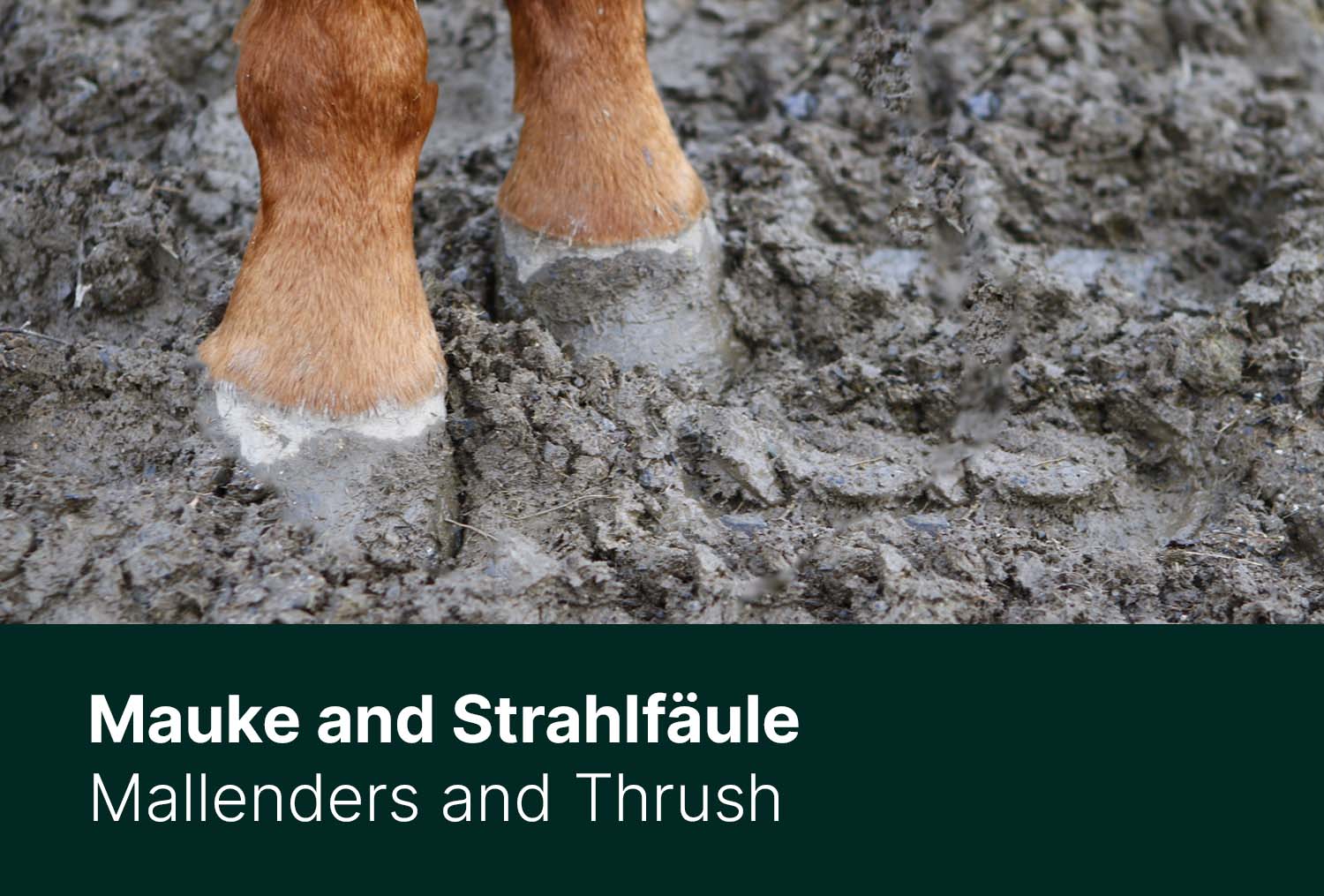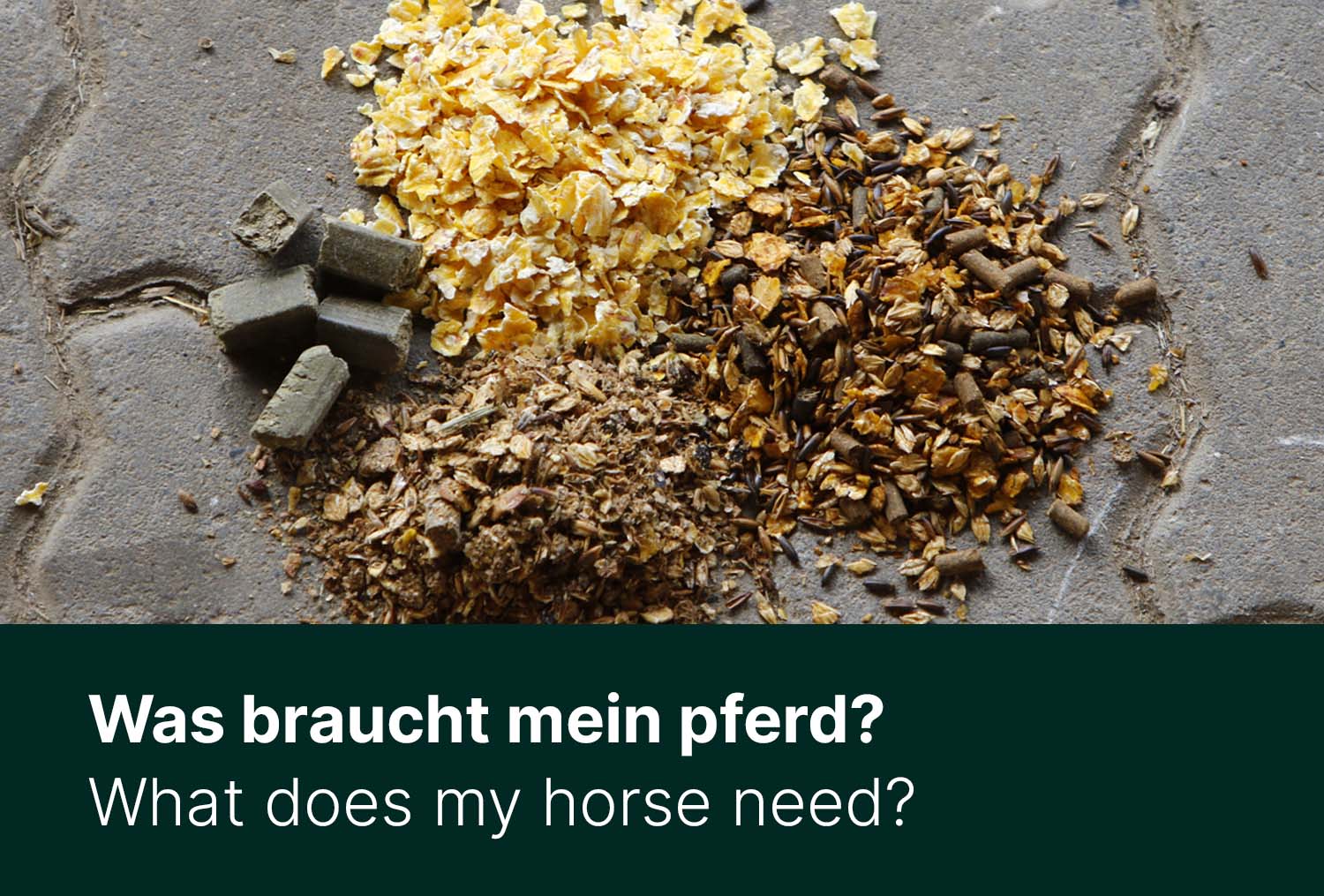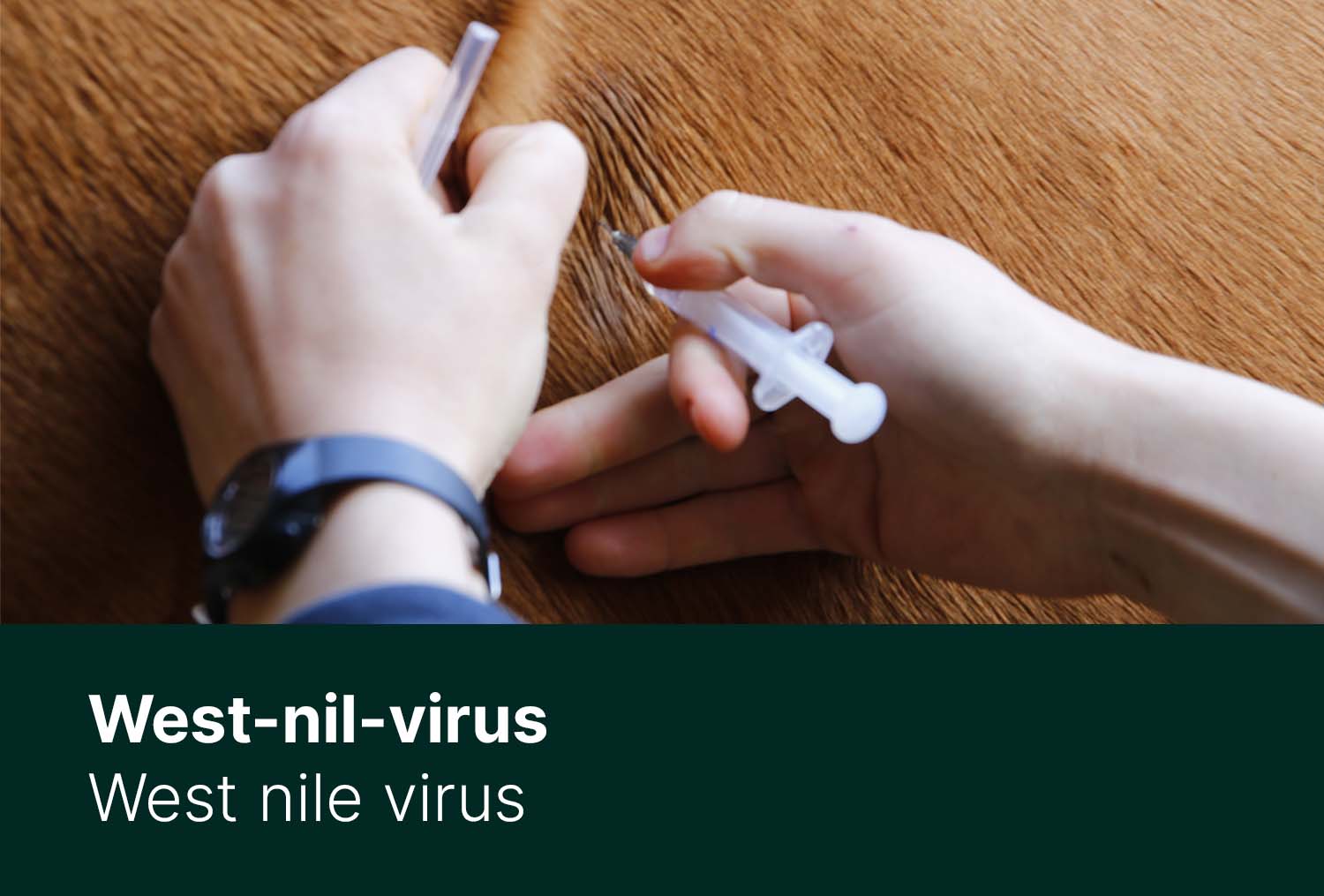In most stables, the winter period also means paddock time. Anyone who does not benefit from a fixed paddock may have problems with the mallenders and thrush. We give you the best tips here to prevent and treat thrush and mallenders.
The meadows are closed in most stables in winter. Due to the excessive rainfall, the horses would severely damage the softened soil and thus the turf, which in turn would profoundly impair regrowth in spring. If you don't want to do without lush meadows, you can't avoid grazing management. While the pastures are preserved over the winter months, the paddocks suffer sensitively from the wetness and weight of the horses. But not only the floor has to endure a lot. The skin in the bondage area is also irritated by the moisture and the mud: Mallenders and thrush can easily be the result.
Mallenders has many Faces
Mallenders is basically understood as a bacterial infection of the skin. Different forms of mallenders can occur: wet mallenders, dry mallenders and warty mallenders. With the weeping scab, the inflammation of the skin can cause so much pain that the affected horses become lame and the legs start to run. Depending on the course and treatment, there may even be bubbles that are filled with purulent liquid. The dry mallenders manifests itself in the formation of scabs and crusts. While this shape — like the warty mallow — looks very uncomfortable, it is far from being as painful as the weeping mallow. Basically, however, there is an urgent need for action with any form of mauve, whereby the dry and warty mauve are much more persistent or sometimes do not heal completely - so the symptoms and skin irritation can also become chronic.
- Causes
Various aspects come into play as triggers for mallenders. On the one hand, of course, stall and runout hygiene play a crucial role. This includes regular and thorough cleaning of the box as well as the appropriate adjustment and design of the run-out areas. Especially during winter, when most horses are on muddy paddocks, mallenders appear more. This is, of course, due to the bacteria that is in the mud and thus touches almost permanently the sensitive ankle area. As prophylaxis and also for the treatment of existing mallenders, it is therefore advisable to plan the exercise accordingly. Since the laying of paddock plates often turns out to be very expensive, a simple "preparation" of the surface is also suitable. Here, the existing mud should be removed as far as possible and then a sufficient amount of gravel or mineral mixture should be applied. A weakened immune system and psychological factors can also promote the formation of mallenders. Feeding also plays a crucial role in terms of nutrient supply. It is advisable to have a blood count of the horse drawn up to rule out any undersupply. Zinc, in particular, plays a very important role in terms of immune defense and skin and hair metabolism.

- Cut of the long Ankle Hair?
As it is often observed, especially horses with a lot of ankle mane or white ankle joint hair are particularly susceptible to mallenders. White fur always means a lack of pigments, which makes the already sensitive fetlock even more susceptible to external influences. The ankle mane, which is basically a protective function for the ankle bend, can bring a decisive disadvantage through wetness. The curtain and the damp weather create a warm, moist environment on the skin under the mane, which is predestined for the multiplication of bacteria. It is therefore advisable to shorten the hair accordingly during treatment in order to be able to reach the affected skin areas in a more targeted manner. It is not advisable to shave off the areas, however, as this will irritate the hair and make healing difficult. Mallenders can also occur as a secondary cause and together with a fungal infection or mite infestation. It is therefore advisable to take a corresponding sample in order to be able to coordinate the treatment in a targeted manner.

- The right skin environment
Basically, the pH of the skin in inflamed areas is out of balance. Disinfectant preparations do not differentiate between good and harmful bacteria during treatment, which additionally disturbs the skin's environment. During the healing process, it is therefore advisable to support the skin's good bacterial flora, which makes it more robust against external influences. Therefore, in addition to the treatment, the care of the distressed areas with probiotic bacteria and effective microorganisms is also suitable.
Thrush
Thrush is also widespread in winter and is largely underestimated by most horse owners. The putrefaction process is usually only noticed when the hoof starts to stink - but then it is actually too late. As already mentioned, blight is a process that progresses slowly and — recognized early — can be very well contained or even prevented.
- Causes
Bacterias are also responsible for the putrefaction process, which is favored by a wet and unsanitary climate, such as on a muddy paddock. One of the most important avoidance tactics for Thrush is a largely dry or paved surface - the horse ultimately stands permanently on its hoof. The horn of the hoof frog is gradually decomposed by the nested bacteria, which in dangerous cases can adversely affect the hoof mechanism. That is why timely and holistic treatment applies to beam rot as well as mallenders. In addition to factors like poor stall hygiene and unpaved paddocks, hoof care, incorrect shoeing and feeding, which affects horn quality, also play a decisive role in the prevention and treatment of Thrushes.

- The right Treatment
In addition to turning off the external factors, a farrier or orthopedist should be consulted. The rotten horn and dirt should be removed professionally. Blood may come out of the hoof in some places, but this does not have to be bad. The most critical steps in treating thrushes are hoof hygiene and cleaning. If the putrefaction process has already penetrated deeply into the hoof frog, cotton pads that have been soaked in disinfectant and care products should be "pressed" into the hoofs furrows. However, not too much pressure should be applied. The pads have to be changed regularly. Healthy horn has to grow from the inside out. This is the sole way to avoid trapping bacteria. Iodoform ether and hydrogen peroxide dry out and disinfect the jet. However, the treatment should only last a few days, otherwise the hoof frog can dry out too much, which promotes the formation of cracks and, in turn, the nesting of bacteria.


Bottom Line
The holistic assessment and treatment is advisable in both cases. And together with the appropriate treatment, the external factors such as box hygiene and the condition of the spout must be taken into account, otherwise thrushes and mallenders come back quickly. Good prophylaxis protects the horse.













Respiratory Diseases - Prophylaxis and Measures
Strengthening the immune system - keeping, feeding and moving in winter